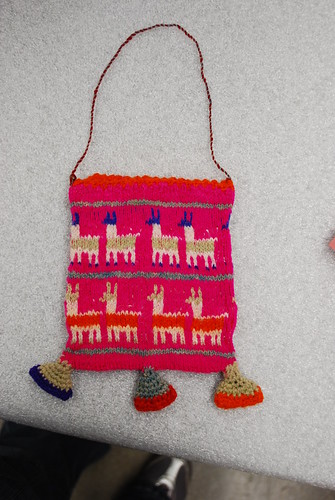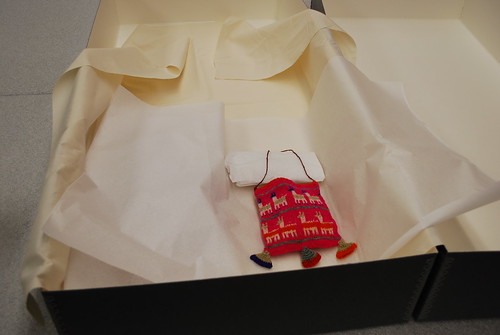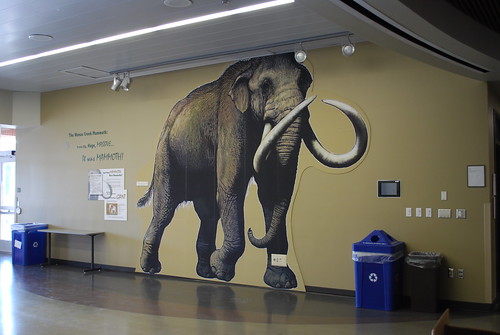Using a series of videos from the Minnesota Historical Society as our guide, we set out to house the textiles. The first piece we did was a small knitted bag, probably from Peru.

The bag had two major needs: a new tag to replace the fading ink on its current tag, and some padding, to relieve pressure on the creases that had formed from being stored flat for many year.

Our first step was to relabel the object. To do so, I first removed the old tag, very carefully, so as not to pull on the knit stitches of the fabric. Meanwhile, Taylor, a student in the class, wrote the catalog number on a piece of twill tape with an Identi-pen; this will be our new label.

Sewing labels to textiles is always a very delicate procedure. The sewing needle and thread need to be very carefully placed between the thread or yarn of the textile that needs to be labeled. To sew down this label, I tacked both ends of the label to the bag without tying knots that might pull on the fibers and cause stress or damage.
We then padded out the bag with some unbuffered acid free tissue paper. In this rather unscientific process, we crumple some tissue paper and place it inside the bag, giving it some bulk and taking some pressure off of the creases that have developed from years of being stored flat.

We then placed the stuffed bag on another sheet of unbuffered acid free tissue paper which will serve as a handling sling, allowing us to easily lift the bag into and out of the box in which it will be stored. In this case we also added a small pillow to stabilize the delicate 'handle' on the bag.

In the interest of space, many textiles will be stored in a single box. Each piece will have a tissue paper sling, and a larger muslin sling will allow us to take all the pieces out of the box at the same time.

Finally, the box is closed up and put back into storage until the textile is needed for research or exhibit.

Each of the students in the class had a different textile to work with, and each faced different challenges to housing it appropriately. By the end of the quarter, each piece was successfully rehoused and readied for storage. A very successful project!
